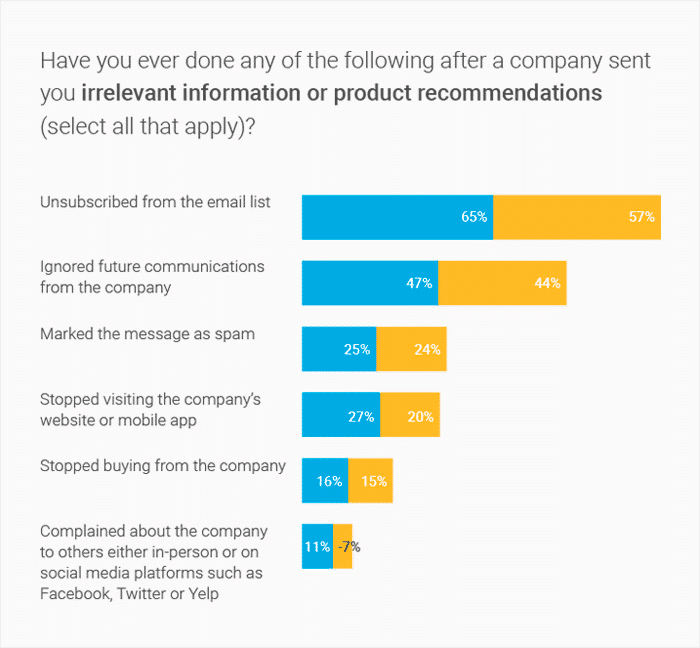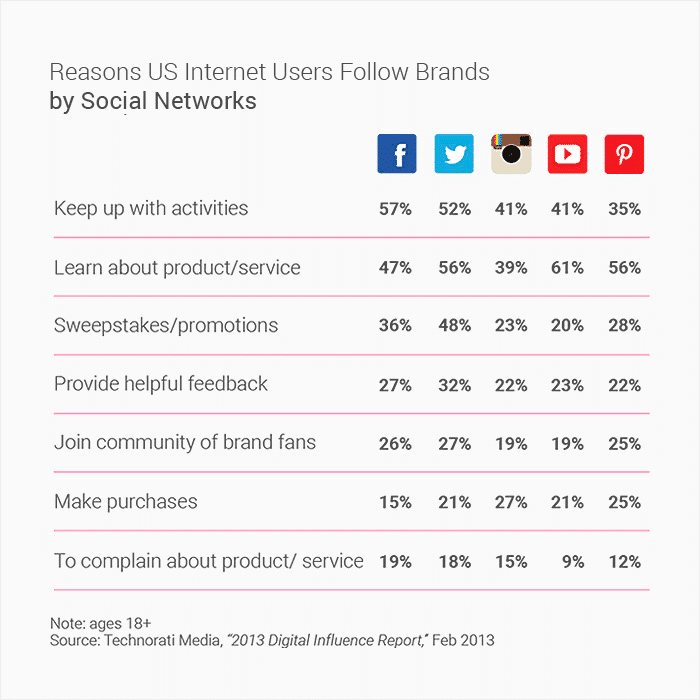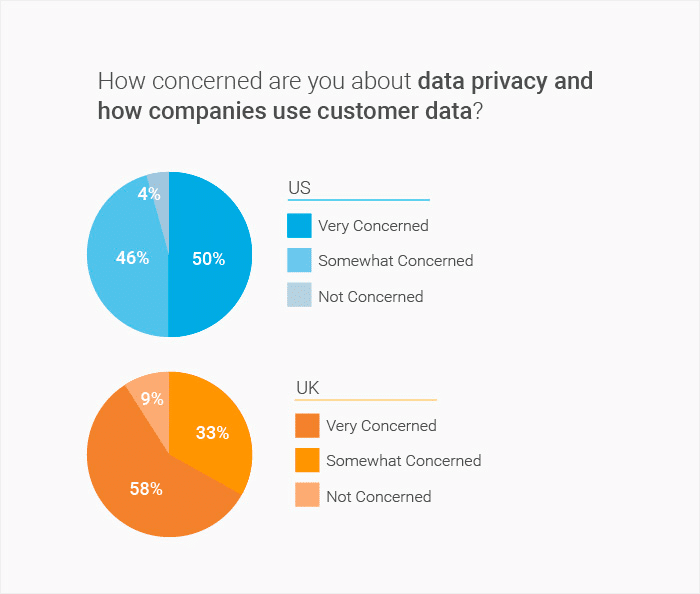Numerous CMOs have stated that this will be the year of personalization, and also one of the biggest digital transformation roadblocks businesses will face.
Consumers are already taking a stand against the lack of personalization, by ignoring and sometimes even completely boycotting a business because of the lack of personalization they received through various marketing material:

Source: Venture Beat
In this article, we explain why personalization is going to be a huge part of digital marketing in the coming years.
Why personalization matters
Reports reveal that the average consumer is exposed to a little more than 5,000 ads per day, that’s a lot of clutter in their peripheral. With so media being thrown at consumers, content that isn’t relevant tends to get ignored and sometimes even frustrates.
In fact, Janrain surveyed consumers and found that 74% are fed up of seeing content from their favorite websites because it’s totally irrelevant to their needs. Retargeting has made serving ads to website visitors a lot easier, but marketing teams still seem to be getting it wrong.
On the other hand, businesses who did everything in their power to provide their consumers with a tailored website experience saw a considerable increase in sales, with around 94% of marketers emphasizing the success of their company on personalization.
So how can businesses provide a more personalized experience?
Online cookies are not the answer
Placing a cookie on a consumer’s device and following them online serving ads is the most common method used to ‘personalize’ a shopper’s journey. However, cookies only have a 59% success rate in tracking prospects and have been known to provide questionable conversion stats if businesses are running multiple retargeting ads across many platforms.
Whereas in 2014 tracking was limited to only the Internet, location-targeting is set to replace the dated website cookie. Businesses are already allocating budgets towards GPS beacons and gadgetsto serve prospects with ads based on location, it’s only a matter of time before personalization through TV and radio is possible too.
Here’s what Marketing Scientist Tim McMullen had to say:
“As consumers expect the world around them to not just respond to, but anticipate their needs, we should provide interconnected services and functionality across brands, devices, and platforms. The Internet of things is just the beginning: Thanks to BLE technology and mobile device advancements, the world around us is becoming smart and aware of user behavior. We have the potential to correlate data about users in a physical space, social media history, personal preferences, and even buying history. With this new level of insight, we can build a true online profile that allows real personalization, customization, and unique experiences throughout the customer life cycle. “
Source: Adobe
Listen to social media data
Deloitte found that 47% of millennials’ purchases are influenced by content found on social media, with more than half the amount of users on YouTube, Pinterest and Facebook using the platform to learn more about a product or service:
 Source: www.eMarketer.com
Source: www.eMarketer.com
When creating a personalized shopping experience for consumers, nothing works better than one-on-one communication. While not a viable strategy for most businesses, leveraging social media sites and reading tweets, comments and researching specific content provides businesses with greater insights on how their consumers feel towards a brand or product.
SaaS tools like SproutSocial can consolidate content from a number of social media sites based upon keywords, topics, business mentions and much more. This type of information is invaluable and one of the keys to unlocking the top levels of personalization consumers need.
Privacy is still a major concern
To offer personalization, data must be acquired, and while consumers demand personalization, they also want to keep their privacy. 94% of Americans are currently concerned about the way businesses are gaining their personal information:

Finding this balance won’t be easy but using content management systems that seamlessly integrate with other SaaS tools will be a start. Already we are seeing websites offer consumers the option to login using their social media profiles or email accounts. Bridging technology together and getting different systems to talk to one another allow for better personalization while keeping a consumer’s information secure.
Having the ability to login and complete the checkout process by logging into a social media accounts lets businesses learn more about their customers, without customers handing having to hand over personal information.
Summary
Today it has never been easier to create an advert and serve it to a million people through Facebook or Google, anybody can do it and everyone is doing it. Consumers are already showing signs of fatigue with the current way businesses communicate and manufacture their shopping experience.
Personalization will be the order of the day and a detrimental part of improving buyer-seller relationships.

